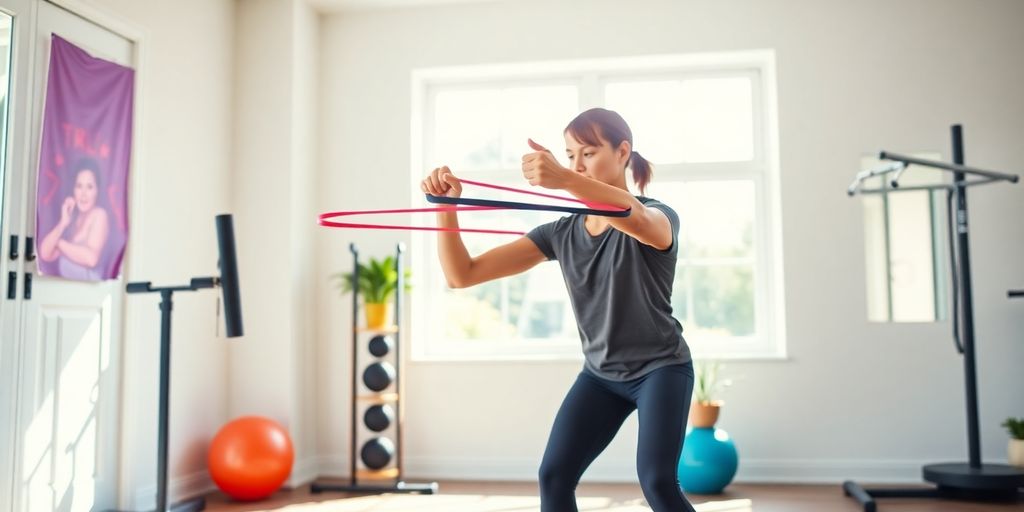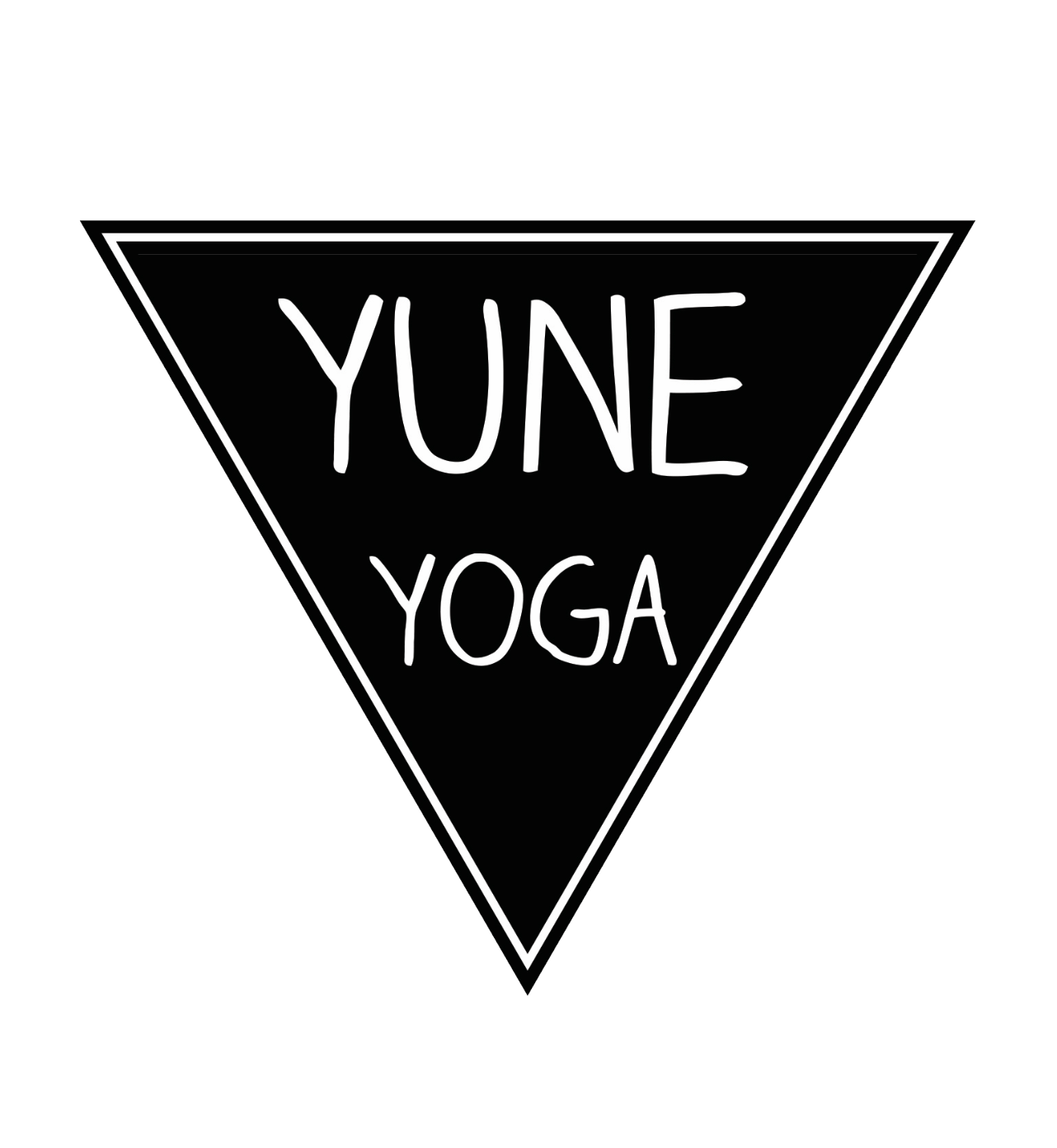
Ultimate Guide to Resistance Bands Exercises for Beginners: Start Your Fitness Journey Today!
Welcome to the world of resistance bands exercises for beginners! If you're just starting out or looking for a fresh way to stay fit, resistance bands could be the perfect solution. They’re affordable, portable, and versatile, making them a great addition to any workout routine. In this guide, we’ll cover everything you need to know about using resistance bands, from choosing the right ones to essential exercises that will help you kick off your fitness journey.
Key Takeaways
- Resistance bands are great for all fitness levels, from beginners to advanced.
- They help improve strength and flexibility without straining your joints.
- You can do a wide range of exercises targeting different muscle groups.
- Setting up your workout space is easy and you can do it almost anywhere.
- Staying consistent and tracking your progress is key to achieving your fitness goals.
Understanding Resistance Bands Training
What Are Resistance Bands?
Okay, so what are these resistance bands everyone's talking about? Basically, they're stretchy bands, usually made of latex or rubber, that provide resistance when you pull or stretch them. Think of them as a portable gym. They come in different strengths, so you can adjust the intensity of your workout. I remember when I first saw them, I thought they looked like giant rubber bands, but trust me, they're way more effective than that!
Benefits of Resistance Bands
Why should you even bother with resistance bands? Well, there are a bunch of good reasons. For starters, they're super affordable and don't take up much space. You can literally take them anywhere. Plus, they're easy on the joints, which is great if you're just starting out or have any aches and pains. And, honestly, they can make your workouts way more interesting. You can even use them for dumbbell exercises you already know.
Here's a quick rundown:
- Affordable and portable
- Joint-friendly
- Versatile for various exercises
- Suitable for all fitness levels
I started using resistance bands a few months ago because my apartment is tiny, and I didn't want to invest in a bunch of weights. I was surprised at how effective they are! I've definitely noticed an increase in my strength and muscle tone, and I can do it all from my living room. It's a win-win.
Types of Resistance Bands
There are several types of resistance bands, each with its own pros and cons. You've got your standard flat bands, loop bands (also called mini bands), tube bands with handles, and even figure-eight bands. Flat bands are great for general use, while loop bands are awesome for lower body work. Tube bands with handles feel more like using weights, and figure-eight bands are good for specific exercises. Choosing the right resistance band training depends on your goals and what feels most comfortable for you.
Here's a simple table to illustrate the differences:
| Type of Band | Best For | Pros | Cons |
|---|---|---|---|
| Flat Bands | General use, stretching | Versatile, inexpensive | Can roll up, less durable |
| Loop Bands | Lower body, glute activation | Stays in place, good for targeting | Limited range of motion |
| Tube Bands w/Handles | Simulating weight exercises | Comfortable grip, feels like weights | More expensive, handles can break |
| Figure-Eight Bands | Specific arm/shoulder exercises | Good for targeted movements | Limited overall exercise options |
Getting Started with Resistance Bands
So, you're ready to jump into the world of resistance bands? Awesome! It's easier than you think, but a little prep goes a long way. Let's break down how to get started the right way.
Choosing the Right Resistance Bands
Okay, first things first: you gotta pick the right bands. It's not one-size-fits-all, and honestly, having a variety is the best way to go. Think of it like having different weights at the gym. You wouldn't try to bench press the same weight you use for bicep curls, right?
Here's a quick rundown:
- Light Resistance: Perfect for warm-ups, rehab exercises, or high-rep movements. If you're just starting out, these are your best friends.
- Medium Resistance: A good middle ground for general fitness and building strength. You'll probably use these the most.
- Heavy Resistance: Time to challenge yourself! Use these for lower-rep strength exercises, like squats or rows.
Also, pay attention to the type of band. Loop bands are great for lower body work, while handled bands are awesome for upper body exercises. Don't be afraid to experiment and see what feels best for you. You can even find dumbbell exercises that mimic the same movements.
Setting Up Your Workout Space
Alright, now that you've got your bands, let's talk about where you're actually going to use them. You don't need a ton of space, but a little room to move is key. Clear out any furniture or clutter that might get in your way. Trust me, tripping over your coffee table mid-squat is not a good time.
Ideally, you'll want a flat, stable surface to stand on. A yoga mat can be helpful for added cushioning, especially if you're doing floor exercises. And make sure you have enough light so you can see what you're doing! Nobody wants to strain their eyes trying to figure out the proper form.
Safety Tips for Beginners
Okay, this is super important, so listen up! Resistance bands are great, but they can also be a little dangerous if you're not careful. Always inspect your bands before each workout. Look for any tears, cracks, or signs of wear and tear. If you see anything suspicious, toss that band and grab a new one. It's not worth risking an injury.
Here are a few more safety tips:
- Start slow: Don't try to do too much too soon. Focus on proper form and gradually increase the resistance as you get stronger.
- Anchor points: If you're using an anchor point (like a door or a pole), make sure it's secure and stable. You don't want it to come loose mid-exercise.
- Controlled movements: Avoid jerky or sudden movements. Smooth, controlled motions are much safer and more effective.
- Listen to your body: If you feel any pain, stop immediately. It's better to err on the side of caution than to push through an injury.
Starting with resistance bands is a smart move. They're easy to store, affordable, and can give you a full-body workout. Just remember to take it slow, focus on form, and listen to your body. You'll be feeling stronger and more confident in no time!
Essential Resistance Bands Exercises for Beginners

Upper Body Workouts
Okay, so you wanna beef up those arms and shoulders? Resistance bands are surprisingly good for that. You don't need a fancy gym, just a band and a bit of space. Let's start simple.
- Bicep Curls: Stand on the band, feet shoulder-width apart, and curl those arms up. Keep your elbows close to your body. Aim for 3 sets of 10-12 reps. It's harder than it looks!
- Tricep Extensions: Hold the band overhead, then extend your arms straight up, feeling the burn in your triceps. Again, 3 sets of 10-12 reps should do the trick.
- Lateral Raises: Stand on the band and lift your arms out to the sides, keeping them straight. This one's great for your shoulders. 3 sets of 10-12 reps.
Remember to control the movement. Don't just let the band snap back. Slow and steady wins the race, and prevents injuries.
Lower Body Workouts
Don't skip leg day! Resistance bands can make your lower body workouts way more effective, even without weights. Here are a few to get you started:
- Squats: Place the band around your thighs, just above your knees. Do your regular squats, focusing on pushing your knees out against the band. This activates your glutes more. 3 sets of 15 reps.
- Glute Bridges: Lie on your back with your knees bent and the band around your thighs. Lift your hips off the ground, squeezing your glutes at the top. 3 sets of 15 reps. Feel that burn!
- Leg Extensions: Sit on a chair, loop the band around your ankles, and extend one leg straight out. This targets your quads. 3 sets of 12 reps per leg.
Core Strengthening Exercises
A strong core is important for everything. Resistance bands can help you target those abs and back muscles. These exercises are simple but effective.
- Standing Ab Twists: Stand on the band, holding the ends in your hands. Twist your torso from side to side, keeping your core engaged. 3 sets of 15 twists per side.
- Banded Crunches: Lie on your back with your knees bent and the band looped around your feet, holding the ends in your hands. Do your crunches, pulling against the resistance of the band. 3 sets of 12 reps.
- Plank with Band Pull-Throughs: Get into a plank position with the band looped around one wrist. Use your other hand to pull the band across your body. This works your core and shoulders. 3 sets of 10 reps per side. Remember to maintain proper form during these exercises.
Creating Your Resistance Bands Workout Plan
How to Structure Your Workouts
Okay, so you've got your bands and you're ready to go. But just jumping in without a plan? Not the best idea. Think about what you want to achieve. Are you trying to build muscle, lose weight, or just get a bit more active? Your goals will shape your workout structure. A good starting point is to divide your workouts by body part – upper body, lower body, and core. This allows you to focus on specific muscle groups and ensure balanced development. For example:
- Monday: Upper Body (chest, back, shoulders, arms)
- Wednesday: Lower Body (legs and glutes)
- Friday: Core Strengthening Exercises
Don't forget to include warm-up and cool-down periods in each session. A dynamic warm-up prepares your muscles for exercise, while a static cool-down helps them recover.
Frequency and Duration Recommendations
How often should you be using those resistance bands? For beginners, I'd suggest aiming for 2-3 workouts per week, with at least one day of rest in between. This gives your muscles time to recover and rebuild. Each workout should last around 30-45 minutes, including your warm-up and cool-down. As you get stronger, you can gradually increase the frequency, duration, or intensity of your workouts. Listen to your body and don't push yourself too hard, especially when you're just starting out. Remember, consistency is key! Even short, regular workouts are more effective than long, infrequent ones. You can also use resistance band training as a great substitution for dumbbell exercises.
Tracking Your Progress
It's easy to lose motivation if you don't see results. That's where tracking your progress comes in. Keep a workout journal or use a fitness app to record your exercises, sets, reps, and resistance levels. This will help you monitor your improvements and identify areas where you need to push yourself harder. Here's a simple way to track:
| Date | Exercise | Sets | Reps | Resistance | Notes |
|---|---|---|---|---|---|
| 3/11/2025 | Banded Squats | 3 | 12 | Light | Felt good, could increase resistance |
| 3/11/2025 | Bicep Curls | 3 | 15 | Light | Need to focus on form |
| 3/11/2025 | Resistance Rows | 3 | 10 | Medium | Challenging, but manageable |
Tracking your progress isn't just about seeing how far you've come; it's also about identifying patterns and making adjustments to your workout plan. Are you consistently struggling with a particular exercise? Maybe you need to modify it or reduce the resistance. Are you finding your workouts too easy? It's time to increase the challenge. By paying attention to your body and your data, you can optimize your training and achieve your fitness goals faster.
Common Mistakes to Avoid
Neglecting Proper Form
Maintaining correct form is super important when you're using resistance bands. It's easy to get sloppy, especially when you're tired, but that's when injuries happen. Think about what muscles you're supposed to be working and make sure you're feeling the burn in the right place. If you're not sure, it's always a good idea to check out some videos or ask a trainer to watch you. You want to maintain proper form to avoid injuries.
Using Too Much Resistance
It's tempting to grab the thickest band you can find and go all out, but that's a recipe for disaster. Start with lighter resistance and gradually work your way up. You should be able to complete the exercises with good form and without feeling like you're straining. If you can barely do a few reps, the band is too strong.
Here's a simple guide:
- Start with a light band if you're new to exercise.
- Increase resistance when you can easily do 12-15 reps with good form.
- Don't be afraid to drop back down if an exercise feels too hard.
Skipping Warm-Up and Cool Down
I know, I know, warm-ups and cool-downs are boring. But they're also essential for preventing injuries and helping your muscles recover. A quick warm-up gets your blood flowing and prepares your muscles for exercise. A cool-down helps to reduce soreness and improve flexibility. Don't skip them!
Think of your body like a car engine. You wouldn't start driving at top speed without warming up the engine first, would you? Same goes for your muscles. A proper warm-up and cool-down are like giving your body the TLC it needs to perform its best and avoid breakdowns.
Here are some ideas for warm-ups and cool-downs:
- Light cardio, like jogging in place or jumping jacks.
- Dynamic stretches, like arm circles and leg swings.
- Static stretches, holding each stretch for 20-30 seconds.
Incorporating Resistance Bands into Your Routine
Combining with Other Equipment
Okay, so you've been using resistance bands for a bit, and you're feeling good. Now what? Well, one cool thing is that you can mix them with other workout stuff you might already have. Think about it: dumbbells, kettlebells, even just your own body weight. The bands add a different kind of challenge because of the constant tension.
Like, you could do bicep curls with dumbbells and then immediately do some resistance band curls to really burn out your muscles. Or, try using a band around your legs during squats for extra glute activation. It's all about finding what works for you and keeps things interesting. I've found that mixing it up prevents me from getting bored, which is half the battle, right?
Using Resistance Bands for Rehabilitation
Resistance bands aren't just for building muscle; they're also super useful for rehab. My physical therapist recommended them after I sprained my ankle last year, and honestly, they were a lifesaver. The gentle resistance helps you regain strength and mobility without putting too much stress on your joints. It's all about controlled movements and listening to your body.
- Start with very light resistance.
- Focus on proper form to avoid re-injury.
- Gradually increase the resistance as you get stronger.
I remember being so frustrated that I couldn't do my regular workouts, but the bands allowed me to stay active and work on my recovery at the same time. It's a great way to ease back into things after an injury.
Adapting Exercises for Different Fitness Levels
One of the best things about resistance bands is how easy it is to adjust the difficulty. Whether you're a total beginner or a seasoned athlete, you can make the exercises work for you. New to fitness? Start with lighter bands and focus on getting the form right. Been working out for years? Use heavier bands or double them up for extra resistance. You can also change the way you hold the band to alter the tension. For example, shortening the band increases the resistance. It's all about experimenting and finding what challenges you without compromising your form. You can find a resistance band set with varying levels of resistance to cater to your needs.
| Fitness Level | Band Resistance | Rep Range |
|---|---|---|
| Beginner | Light | 12-15 reps |
| Intermediate | Medium | 10-12 reps |
| Advanced | Heavy | 8-10 reps |
Staying Motivated on Your Fitness Journey

Alright, so you've started using resistance bands, that's awesome! But let's be real, sticking with it can be tough. Life gets in the way, motivation dips, and suddenly those bands are gathering dust in a corner. Here's how to keep that from happening.
Setting Realistic Goals
Don't try to become a fitness guru overnight. Start small and build from there. Instead of aiming for an hour workout every day, maybe start with 20 minutes three times a week. It's way better to consistently do a little than to burn out trying to do too much too soon. Think about what you actually want to achieve. Do you want to be able to do more reps? Increase your overall strength? Lose a few pounds? Write it down! Seeing your goals on paper makes them feel more real and achievable.
Finding a Workout Buddy
Everything's easier with a friend, right? Having someone to exercise with can make a huge difference. You can motivate each other, hold each other accountable, and even make the workouts more fun. If you can't find a buddy in person, consider joining an online fitness community. There are tons of groups out there where you can connect with people who have similar goals and interests. Plus, you can share tips, ask questions, and celebrate each other's successes. It's all about building a support system.
Celebrating Your Progress
Don't forget to acknowledge how far you've come! It's easy to get caught up in what you haven't achieved yet, but it's important to recognize your wins along the way. Did you manage to do an extra rep this week? Did you feel stronger during your workout? Awesome! Treat yourself (in a healthy way, of course!). Maybe it's a new workout outfit, a relaxing bath, or just some time to do something you enjoy.
Remember, fitness is a journey, not a destination. There will be ups and downs, good days and bad days. The key is to keep showing up, even when you don't feel like it. Celebrate the small victories, learn from the setbacks, and never give up on yourself.
Wrapping Up Your Resistance Band Journey
So there you have it! Resistance bands are a great way to kick off your fitness journey. They’re easy to use, affordable, and you can take them anywhere. By adding these exercises to your routine, you’ll not only build strength but also improve your overall fitness. Remember, it’s all about consistency and having fun while you work out. Don’t hesitate to share this guide with friends who might want to join you on this journey. Grab those bands and get started today—your future self will thank you!
Frequently Asked Questions
What are resistance bands?
Resistance bands are stretchy bands used for exercise. They help you strengthen your muscles by providing resistance when you pull or push them.
What are the benefits of using resistance bands?
Using resistance bands can improve your strength, flexibility, and balance. They are also easy to use and can be taken anywhere!
How do I choose the right resistance band?
When picking a resistance band, look for one that feels comfortable and offers the right amount of resistance for your fitness level. Beginners should start with lighter bands.
Can I use resistance bands if I have an injury?
Yes, resistance bands can be gentle on your joints and are often used in rehabilitation. However, it’s a good idea to consult a doctor or a trainer first.
How often should I use resistance bands?
For beginners, aim to use resistance bands about 2 to 3 times a week. This will help your muscles get stronger without overdoing it.
Are resistance bands suitable for all fitness levels?
Absolutely! Resistance bands come in different strengths, so they can be used by anyone from beginners to advanced athletes.


